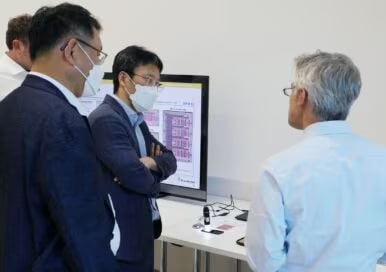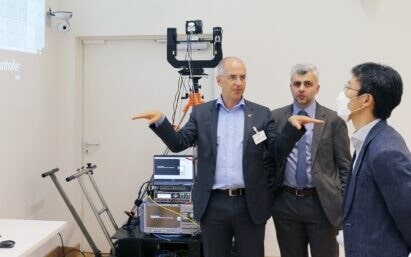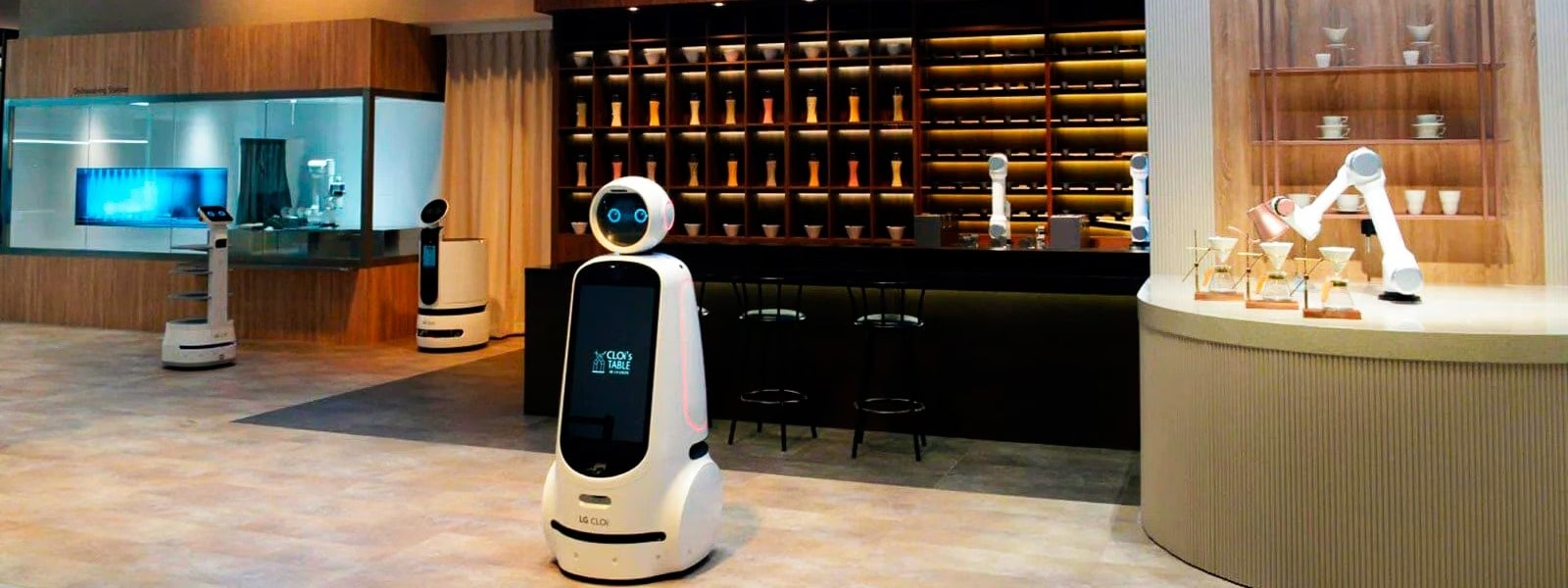We use cookies, including cookies from third parties, to enhance your user experience and the effectiveness of our marketing activities. These cookies are performance, analytics and advertising cookies, please see our Privacy and Cookie policy for further information. If you agree to all of our cookies select “Accept all” or select “Cookie Settings” to see which cookies we use and choose which ones you would like to accept.
LG Innovation: Working Together Toward the Arrival of 6G Technology
As a pioneer in vehicle-to-everything (V2X) innovations, LG sees the importance of 6G for the future of mobility. A mobile system that transmits information at high speed via ultra-responsive, ultra-reliable and ultra-low latency connection is essential to the success of next-generation autonomous vehicles. Low latency is critical when cars are travelling at high speeds and communication from vehicle to vehicle, vehicle to infrastructure or vehicle to pedestrian. 6G can help prevent accidents for a safer driving experience.

6G networks will be able to support faster wireless transmission and communication speeds with low-latency and high-reliability. 6G will be a key component of Ambient Internet of Everything, the emerging technology that aims to improve living and business environments by making them more sensitive, adaptive, autonomous and personalized to consumers’ needs by recognizing human presence and preferences.
LG recently tested the wireless transmission and reception of 6G technology. So far, we have achieved 6G data at a distance of 320 meters outdoors at a frequency of 155 to 175 GHz.
Even though it is clear that 6G technology is still under development, our success thus far is exciting. The eventual goal is to take 6G technology and commercialize it in urban areas to provide better coverage. Just last year, this technology was only available at a distance of 100 meters, so massive improvements have been made.
What Makes 6G So Challenging?
There are a number of reasons why 6G technology is a significant challenge. 6G uses ultra-wideband frequencies, and it has a relatively short range. Furthermore, power loss can take place from the time of transmission to the time of reception. Therefore, LG has been working with the Fraunhofer Institute for Applied Solid State Physics and Fraunhofer HHI to develop a power amplifier cable. The goal of this cable is to significantly increase transmission strength and improve the quality of incoming signals. That way, 6G technology will become more reliable.
LG has been able to integrate this new technology into its circuits, taking one more step toward the commercialization of this novel technology. If successful, LG wants to offer 6G speeds at a rate of 1 TB per second for use in indoor and outdoor locations. If successful, 6G will be a major driver of improved user experiences, streamlined business transactions, and technological growth.
When Will 6G Networks Become Readily Available?
6G technology is still under development, but early estimations indicate that 6G network standardization will become a reality in 2025, with bold commercialization of the technology in 2029. When compared to existing 5G wireless networks, it is expected that 6G wireless networks will deliver improved data speeds, reduced latency, and more consistent reliability. All of this will add up to a better user experience, with many companies already preparing for the introduction of this new technology.
Furthermore, 6G technology has the ability to spur different types of innovation. Because a 6G network can handle more data at once, mobile technology will become more versatile, opening doors to possibilities that are not available on a 5G network. A few examples include mobile holograms, ambient computing, and the expansion of The Internet of Things. The end result could be increased customized ability among users, bringing businesses and people together organically.

The Growth of R&D Cooperation Belts and 6G Innovation
Global companies are racing to enter the 6G space given the key role it will play in enabling all types of innovation.
To ensure its continued leadership in 6G, LG is actively cooperating with respected research institutes, universities and businesses from all over the world. We are also collaborating to establish ‘R&D cooperation belts’ for 6G core technologies, working hand-in-hand with organizations, including Fraunhofer HHI& IAF, KAIST, KRISS and Keysight Technologies, Inc., to accelerate the arrival of the next generation of wireless network communications.
In June 2021, LG was selected by the Next G Alliance, an initiative of the Alliance for Telecommunications Industry Solutions (ATIS), to lead an applications working group to discuss 6G technologies and guide the future direction of 6G telecommunications services.
LG is always looking for new partners in the academic and business world. We believe that when everyone works together, it is possible to find answers more quickly. 6G technology has the potential to increase the accessibility of mobile technology, improve the experience of users everywhere, and open the doors to new business opportunities.
For the latest information on LG’s 6G developments, visit the LG Newsroom

